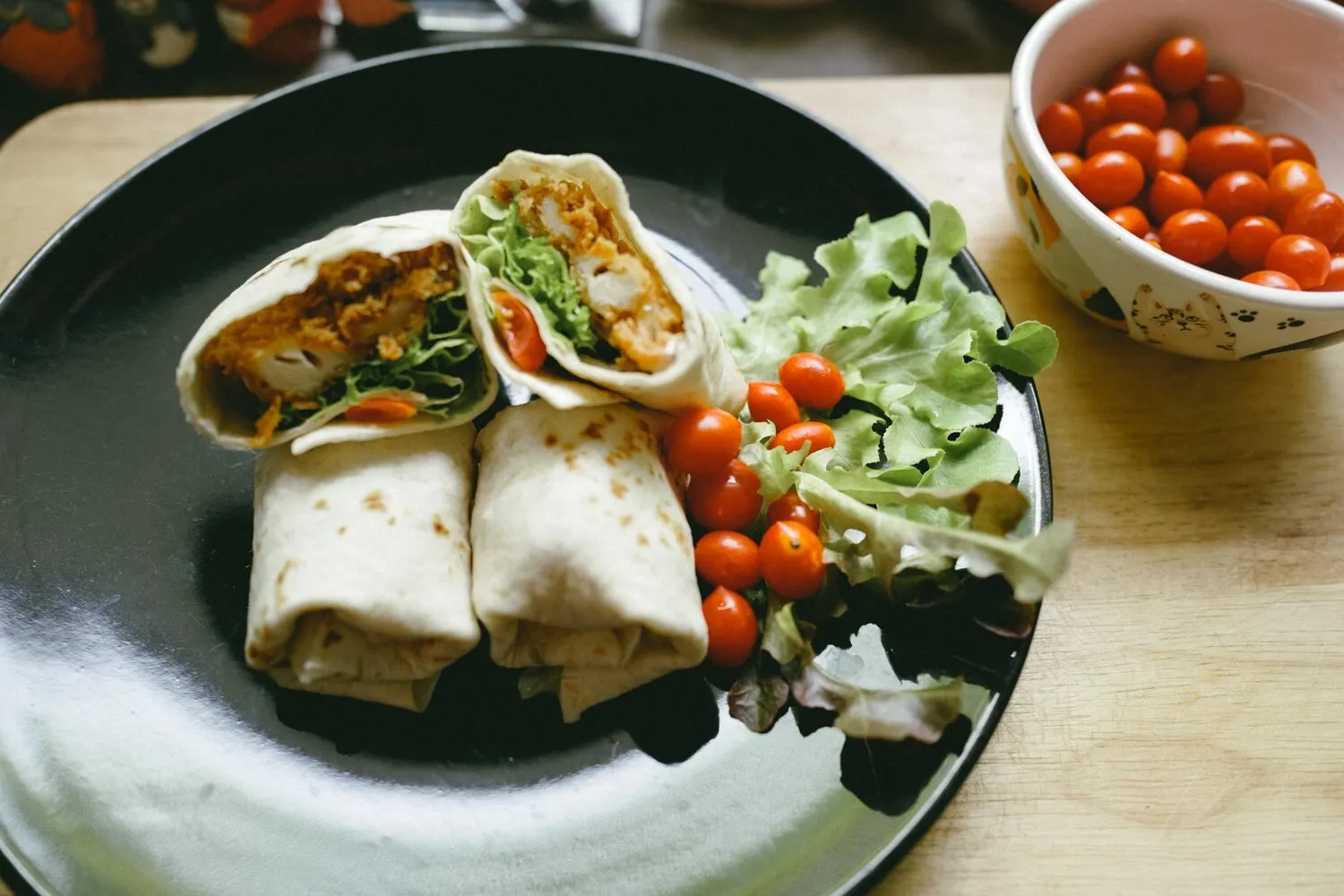
Burritos
A large flour tortilla filled with your choice of meat, beans, rice, cheese, and other toppings.
Nutrition Facts
* The % Daily Value (DV) tells you how much a nutrient in a serving of food contributes to a daily diet. 2,000 calories a day is used for general nutrition advice.
Mi Azteca Mexican Restaurant
The burrito's origins are somewhat hazy, with various theories attributing its creation to different regions and time periods in Mexico. It is believed to have evolved from earlier forms of wrapped meat and bean dishes, becoming increasingly popular as a convenient and portable meal, particularly among field workers and travelers.
Burritos are a staple of Mexican-American cuisine and have become deeply ingrained in the food culture of the United States, evolving significantly from their Mexican origins to cater to American tastes. They represent a fusion of cultures and culinary traditions.
Regional Variations
Different regions in Mexico and the United States have their own takes on burritos, with variations in filling ingredients, preparation methods, and serving styles. For instance, the California burrito often includes french fries, while the Mission burrito is known for its large size and inclusion of rice and beans.
Convenience and Accessibility
Burritos are highly valued for their portability and ease of consumption, making them a popular choice for a quick and satisfying meal on the go. This convenience has contributed to their widespread popularity across various social and economic groups.
Fusion Cuisine
The burrito has been adapted and integrated into various fusion cuisines, blending Mexican flavors with other culinary traditions. Examples include Korean BBQ burritos and sushi burritos, showcasing the dish's adaptability and global appeal.
Burritos offer a complex blend of flavors depending on the filling, generally featuring savory meats, creamy beans, rich cheese, and a variety of spicy and fresh toppings.
The flavor profile is built upon a foundation of savory components like seasoned beef, chicken, pork, or vegetarian alternatives. Pinto or black beans add earthiness and creaminess. Rice provides a neutral base. Cheese, typically cheddar, Monterey Jack, or Oaxaca, contributes richness and melt. Toppings like salsa (ranging from mild pico de gallo to fiery habanero), guacamole, sour cream, and pickled onions offer layers of fresh, spicy, and tangy notes.
Warm the Tortilla
Warming the flour tortilla makes it more pliable and prevents it from tearing during the wrapping process. A quick pass on a hot griddle or in a microwave is sufficient.
Layer the Ingredients Strategically
Layering the wetter ingredients, such as salsa and guacamole, in the center of the burrito helps prevent it from becoming soggy. Place drier ingredients closer to the tortilla.
Don't Overfill
Overfilling the burrito makes it difficult to wrap and can lead to it falling apart. Aim for a moderate amount of filling to ensure a well-sealed and manageable burrito.
Master the Fold
Fold in the sides of the tortilla towards the center, then tightly roll the burrito from the bottom up, tucking the filling in as you go. This creates a secure and compact package.
Explore additional Mexican dishes and restaurants
Explore MexicanDiscover top dining spots and culinary experiences in Chantilly.
Explore ChantillyLearn more about the food culture, restaurant scene, and culinary heritage of United States.
Explore United States